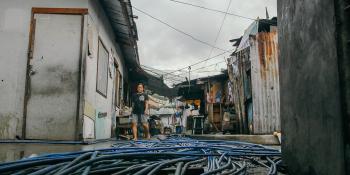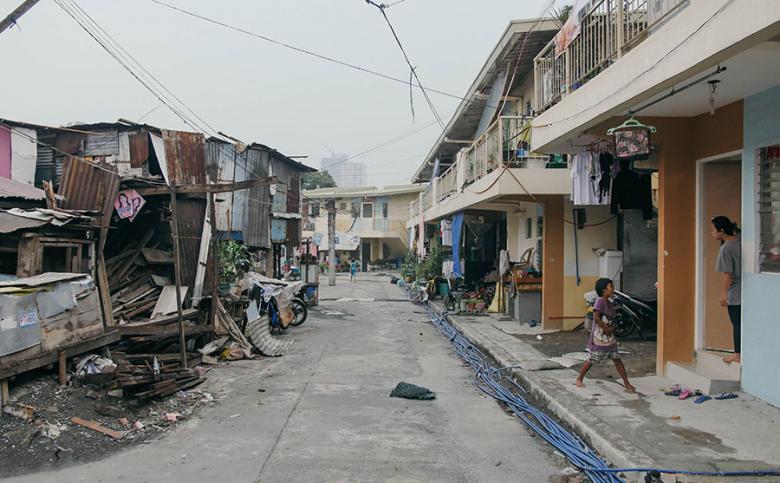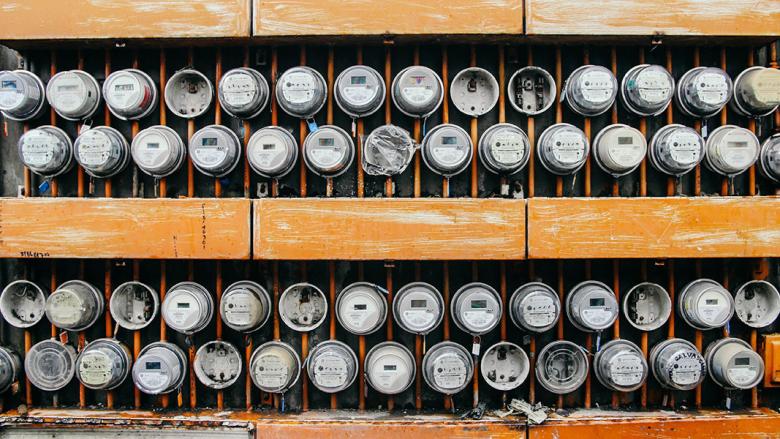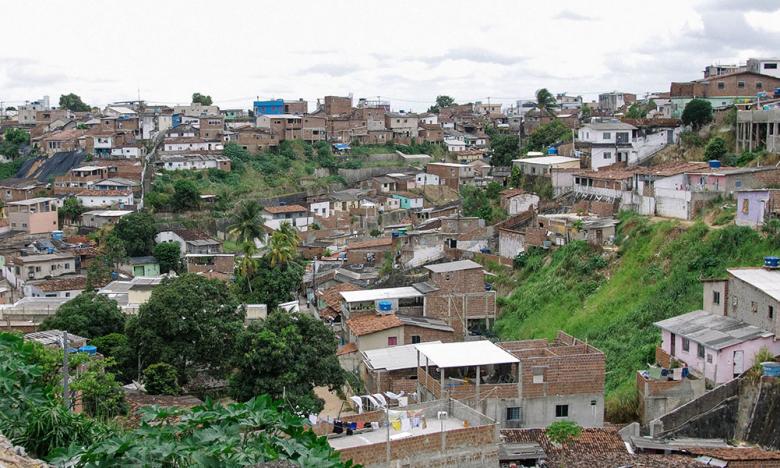
Energy poverty: effects on development, society, and environment
Europe, Middle East and Africa
What is energy poverty?
In 2010, World Economic Forum defined energy poverty as the lack of access to sustainable modern energy services and products. To be more precise, it is not only a matter of sustainability: energy poverty can be found in all conditions where there is a lack of adequate, affordable, reliable, quality, safe and environmentally sound energy services to support development.
Despite the fact energy is the engine of civilization, nowadays access to adequate and affordable sources is not equally distributed on the planet. Its presence is strongly and constantly intertwined with economic and social development: as a result, poorer countries are those usually equipped with the worst energy services, which contribute to malnourishment, unhealthy living conditions and limited access to education and employment.
Insufficient energy usually translates into the impossibility to develop agriculture and manufacturing, thus keeping the poorest countries trapped in a vicious circle: they cannot afford the energy that can drive them out of poverty.
Energy access distribution
For a long time, researchers have tried to define quantity indicators for energy consumption, to delimit the level below which we can properly refer to “energy poverty”. However, since the needs vary according to the country development and structure, it has been almost impossible to draw a clear line and provide universally valid figures.

Habitat for Humanity International Tackels Energy Poverty Issues Around the World.
Energy access is not equally distributed around the globe: it is estimated that the almost 3.5 billion with limited access are responsible for less than 10% of the total household final energy demand, while 1 billion people with energy consumption levels at or above European standards is responsible for half of global energy consumption.
Energy poverty: statistics
According to 2018 IEA World Energy Outlook there are currently 1 billion people in the world – 13% of the total population – with no access to electricity, mostly in Africa and South Asia. In sub-Saharan Africa, it is estimated that approximately 600 million people – 57% of the population – live without electricity, against the 350 million people – representing 9% of the population – who lack access in developing Asia. The UN Agenda for Sustainable Development placed as one of its Goals the achievement of universal energy access by 2030.
If we compare current data to early 2000s, there has been a relevant improvement: regions such as East Asia and Latin America have now reached a better energy access thanks to the extension of electricity networks. Similarly, many other developing countries have experienced significant progress. In Indonesia, for example, the electrification rate is almost at 95%, up from 50% in 2000; in Bangladesh, electricity now reaches 80% of the population, up from 20% in 2000; Kenya passed from 8% in 2000 to 73% in 2017; in Ethiopia, electricity now reaches 45% of the population compared with just 5% in 2000.
Habitat for Humanity has been working to support such families, with new programmes designed to improve energy efficiency in the poorest neighbourhoods of Eastern and Central Europe. We have developed loans and construction advisory services to help them renovate common areas in the buildings and replace the windows in the apartments.

Over 800 million people on the African continent still lack access to modern productive energy.
Energy poverty and environment
Despite the progress, the environmentally sound aspect is still far from being applicable for most of them: it is estimated that nearly 2.7 billion people – 40% of the world population – lack access to clean cooking facilities worldwide, relying instead on solid biomass, coal or kerosene as their primary cooking fuel, that we all know for being the most pollution energy sources available.
Even if figures have been gradually decreasing from 2.9 billion in 2010, efforts need to accelerate in order to meet the SDG 7. Its main objective is not simply to ensure worldwide energy access, but to provide it in an affordable, reliable and sustainable way.
Off-grid renewable energy: a way to connect uncomfortable areas
One of the biggest limitations to achieving the SDGs is linked to the geography: the population in need is mostly located in rural areas, where there is no grid-electricity, and its expansion is often financially and logistically infeasible.
Nigeria, for example, has 73 million of energy poor and the Ivory Coast has 12 million of them, all located in uncomfortable areas; in addition, population is expanding much faster than the grids, meaning that many have to keep relying on kerosene, generators and torches.

Off-grid renewables give developing countries the opportunity to erase the electricity gap.
A help to these areas is progressively coming from off-grid power, that is the one not coming from the grid but from stand-alone solutions, such as solar panels, hydro mini-grids, biogas mini-grids, etc. Off-grid comes from renewable sources, which makes it the perfect alternative to obtain a reliable and sustainable energy service, at a considerably low price.
Off-grid renewables give developing countries the opportunity to erase the electricity gap without passing through a phase of fossil fuels, that would be hard to sustain in terms of cost, natural resources, and global environment. There are currently off-grid renewable power projects in Ghana, Guinea, Kenya, Nigeria, Senegal, South Africa, Tanzania, Togo, and Zambia – if we consider Africa only – and many more are constantly activated.
Out of the dark: off-grid and development of poor countries
It seems that off-grid could be the solution to bring millions of people out of the darkness (not only figuratively) and ensure them a life of no deprivation. In addition, renewable energy would minimize the impact on the environment: providing access to modern energy will help reducing greenhouse gas emissions – it is estimated that the global cumulative emissions due to energy poverty eradication programs would be in the range of 44 to 183 GtCO2 over the end of the century.
To date, over 800 million people on the African continent still lack access to modern productive energy, and many still rely on the old traditional inefficient energy technologies. While the solutions to this exist, the challenge is still how to effectively and sustainably deliver this solution to the most remote off grid communities.
References
Awan, R., Sher, F., & Abbas, A. (2013). An Investigation of Multidimensional Energy Poverty in Pakistan. The Pakistan Development Review, 52(4), 405-418. Retrieved May 25, 2020, from www.jstor.org/stable/24397902
Chakravarty, S., & Tavoni, M. (2013). (Rep.). Fondazione Eni Enrico Mattei (FEEM). Retrieved May 26, 2020, from www.jstor.org/stable/resrep00927
IRENA. (2018). OFF-GRID RENEWABLEENERGY SOLUTIONS Global and regional status and trends. Retrieved from https://www.irena.org/publications/2018/Jul/Off-grid-Renewable-Energy-Solutions
Munien, S., & Ahmed, F. (2012). A gendered perspective on energy poverty and livelihoods — Advancing the Millennium Development Goals in developing countries. Agenda: Empowering Women for Gender Equity, 26(1 (91)), 112-123. Retrieved May 25, 2020, from www.jstor.org/stable/23287236
Population without access to electricity falls below 1 billion – Analysis. (2018, October 30). Retrieved May 25, 2020, from https://www.iea.org/commentaries/population-without-access-to-electricity-falls-below-1-billion
Silverstein, K. (2019, August 19). Off-Grid Solar Power Is Making Africa’s Emerging Economies A Little Brighter. Retrieved May 25, 2020, from https://www.forbes.com/sites/kensilverstein/2019/08/19/off-grid-solar-power-is-making-africas-emerging-economies-a-little-brighter/#11fb72216cd3
Winkler, H. (2009). Cleaner Energy Cooler Climate, Developing Sustainable Energy Solutions for South Africa, HSRC Press, Cape Town.